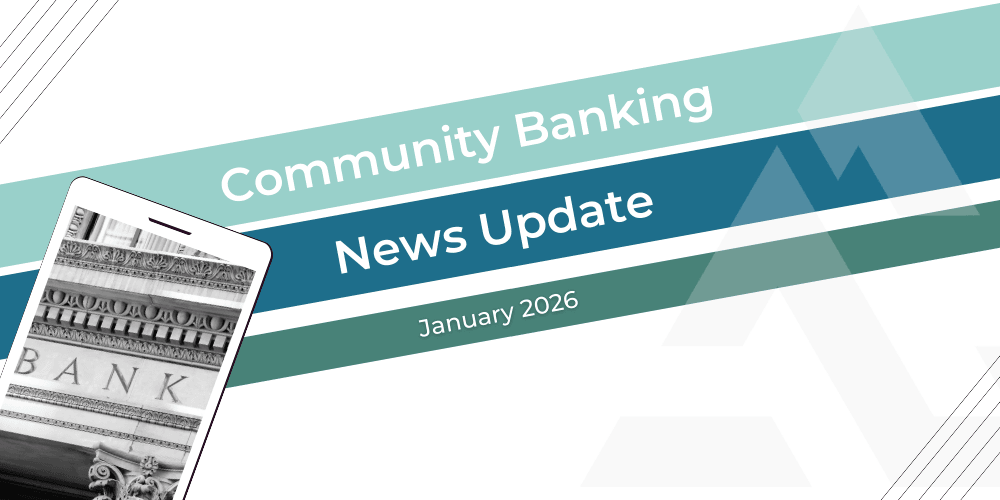Community Banking News Update: Bank Charter Race, Regulatory Relief, M&A Rebound - January 2026
The new year kicks off with new players, new charter access debates, and shifting banking rules. As 2026 gets underway, one theme keeps showing up in...
2 min read
 Sarah Beth Felix, Co-Founder and Chief AML Officer, Acceleron
:
5/24/23 1:10 PM
Sarah Beth Felix, Co-Founder and Chief AML Officer, Acceleron
:
5/24/23 1:10 PM

Before you think – “I don’t have any correspondent relationships!” – you may want to ask your accounting and wire team. Most likely, your community bank or credit union uses a correspondent relationship to send and/or receive foreign exchange wires on behalf of your customers.
For example, a business customer needs to pay a supplier in Mexico via a wire but must send it in Mexican Pesos. Typically, this wire request gets routed to the accounting or wire services team. In most instances it ends up as a generic debit from the business customer’s checking account and processes through a GL account assigned specifically to the correspondent relationship. With that seemingly un-complex process, you could be asking why would this need to change? Noted below are 3 common compliance-related issues that we have found in our client base that ultimately resulted in these clients shoring up their FX offering to better process this type of activity.
Foreign Exchange wires are typically noted by regulatory guidance as having a higher level of risk as opposed to a domestic wire transfer. Due to the processing issues noted above, these wires are noted in the AML system as GL transactions or general debit transactions.
Impact: Most AML monitoring systems have a rule to detect a customer who sends or receives wires, and in some cases FX wires, over a certain number of times or total dollar amount within a specified timeframe.
For example, a rule is typically written to produce an alert if a business customer sends 5
wires, totaling $25,000 or more in 14 days. If this business customer has sent out 3 FX wires totaling $50,000, these would not be tagged correctly in the AML system as the transaction code assigned to them is not a ‘wire’ related code, but rather a general debit or GL debit.
The important and context rich data handled by the accounting or wire team do not make it to the anti-money laundering (AML) system; therefore, it can go without or with very little AML or sanctions oversight.
Impact 1: The AML system may have a rule established to produce an alert when an outgoing wire over $3,000 is sent to the Isle of Man. If this outgoing wire is sent in British pounds (GBP), this country data for Isle of Man would most likely only be found in the GL account activity and not passed through to the AML system.
Impact 2: The AML system is primarily used for screening wire information on an ongoing basis against the US Sanctions list after the payment has gone out. If the wire details such as the beneficiary country, beneficiary name, and beneficiary bank are not flowing through to the AML system for sanctions screening, this present sanctions risk to the institution.
Because FX wires are seen as higher risk services, according to FinCEN, it is vital that these are reported consistently to senior management via the institution’s BSA/AML/Sanctions Risk Assessment as well as reported to regulators.
Impact: OCC regulated banks must provide in their yearly MLR data the country, number and dollar of FX wires.
Bottomline is when a community institution relies upon a large global bank for this service, the importance of getting this service “right” is not on the radar of the large bank. There are compliance risks that are passed onto the institution when FX wires are not formatted or processed in alignment with the core system and AML system. Given that these wires carry more risk than a domestic wire, it is imperative that institutions shore up their FX wire program.
Acceleron builds patented software that allows community banks and credit unions to conduct international payment transactions profitably and compliantly through a correspondent banking marketplace. Serving over 200 financial institutions and facilitating more than $1 billion in international payments annually, Acceleron helps small banks generate non-interest income and compete more effectively with high-fee big banks. Our solutions integrate seamlessly with top payments platforms, ensuring quick implementation and smooth operation.
Subscribe to our monthly newsletter to stay ahead of the curve and get original content you won't find anywhere else!

The new year kicks off with new players, new charter access debates, and shifting banking rules. As 2026 gets underway, one theme keeps showing up in...

The insights community banks turned to most in a year of rapid change, from tokenized desposits to international payment automation. Rapid change...

International wire automation, stablecoins, wallets, and AI reshape global money movement What a pivotal year in cross-border payments. No one...